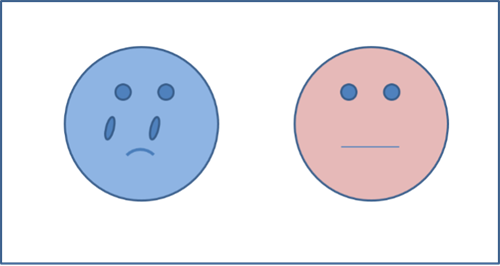Pain and depression: are men more vulnerable to pain than women?

Full reference: Ogliari G, Ryg J, Andersen-Ranberg K, Scheel-Hincke LL, Collins JT, Cowley A, Di Lorito C, Howe L, Robinson KR, Booth V, Walsh DA, Gladman JRF, Harwood RH, Masud T. Association of pain and risk of falls in community-dwelling adults: a prospective study in the Survey of Health, Ageing and Retirement in Europe (SHARE). Eur Geriatr Med. 2022 Dec;13(6):1441-1454. doi: 10.1007/s41999-022-00699-1. Epub 2022 Oct 13. PMID: 36227460; PMCID: PMC9722814.
Both depression and pain are common and reported more frequently by women than men.
It is often thought that pain may lead to depression, while depression may precede and worsen pain. To help disentangle this potential two-way street, we explored whether the presence and intensity of pain may be risk factors for onset of depression in adults without depression.
We analysed data from 28,515 participants in the Survey of Health, Ageing and Retirement in Europe (SHARE). Every two years, SHARE surveys men and women, aged 50 years or older, from European countries and Israel. It focusses on health and ageing. In our study, we selected participants who had a first interview in 2013 (baseline) and a second interview in 2015 (follow-up).
At baseline, they were asked about their history of disease, medication use, life-style and social background. They were also asked whether they were experiencing “no pain”, “mild pain”, “moderate pain” or “severe pain”. To look at depression, we used the self-assessment EURO-D questionnaire, which explores 12 common depressive symptoms. Participants reporting 4 or more of these symptoms are very likely to have depression. We excluded participants who were likely to have depression at baseline. At 2-year follow-up, participants completed the EURO-D questionnaire again.
The average age of our participants was 65 years and half were women. At baseline, women reported pain and a higher intensity of pain more frequently than did men.
At 2-year follow-up, one in seven participants had developed depression. The most frequent depressive symptoms were feeling sad or depressed, fatigue and poor sleep.
We found that participants with more severe pain at baseline had a greater risk of depression at follow-up, even when accounting for many factors which may increase the risk of both pain and depression such as older age and diseases. Pain and depression were more common in women than men. However, pain was a stronger risk factor for onset of depression in men than in women.
In conclusion, we showed that those with higher pain intensity at baseline were also at higher risk of depression at follow-up. While our study does not definitely prove that pain causes depression, our results show that pain may indeed precede depression. Finally, pain and depression were more common in women, but men may be more vulnerable than are women to pain-related depression.